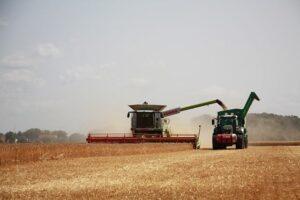Summer harvest complete, yields favorable
The summer harvest in Hungary has recently been completed. Based on the available data, the yields per hectare and the total yield of this year’s harvest are developing favorably compared to preliminary expectations. Farmers should be thanked for their diligence and perseverance, as their dedicated work will enable new bread to be placed on the tables of Hungarian families – announced István Nagy, Minister of Agriculture.

(Photo: Pixabay)
István Nagy explained that the averages per hectare for all plant species (summer cereals and rapeseed) are above the five-year averages. The yield of the largest arable crop – winter wheat – this year is 5.55 tons/hectare, which is almost 2 percent higher than the past five years. The national average yield for winter barley is 5.7 tons/hectare. Triticale is 4.3; spring barley is 4.8; rye 3.4; oats 3; seed peas 2.5; and rapeseed 2.9 tons/hectare were harvested. The straw harvest and summer soil work are progressing at a steady pace. He added that based on the data, it can be said that the crop volume necessary for the country’s supply will be harvested in the 2025−26 season, and a significant amount – in the order of a million tons – may also be exported.
The Minister noted that this year’s sowing area of winter wheat is showing an increase, by 5.9 percent compared to last year
In the case of rye and oats, a significant increase in area is visible this year. István Nagy emphasized that a safe food supply is not only a strategic issue, but also a national security issue. Hungarian agriculture is capable of supplying more than 20 million people, so it is a good feeling to see that the players in the sector can be counted on under all circumstances. In the case of fall-harvested crops, based on the data on unified applications, the total area expected this year is more than 1.5 million hectares, which is lower than in previous years, although the area of sunflower is also increasing this year. The main reason for this is that sunflower performs better under the extreme weather conditions of this year and the previous period than, for example, corn. Soybeans are also showing growth, exceeding the data of the past five years by about 12 percent, with a total area of 79 thousand hectares this year. Given that these crops do not tolerate prolonged drought and heat waves well, crop losses are expected.
AM
Related news
EU Council approves changes to agricultural rules to boost competitiveness
🎧 Hallgasd a cikket: Lejátszás Szünet Folytatás Leállítás Nyelv: Auto…
Read more >Thousands of farmers protest in Brussels against EU-Mercosur agreement
🎧 Hallgasd a cikket: Lejátszás Szünet Folytatás Leállítás Nyelv: Auto…
Read more >The government is giving special support to irrigation development
🎧 Hallgasd a cikket: Lejátszás Szünet Folytatás Leállítás Nyelv: Auto…
Read more >Related news
(HU) Idei győztes sorrend: Grand Automotive East, Tesco Magyarország, Nestlé Hungária
🎧 Hallgasd a cikket: Lejátszás Szünet Folytatás Leállítás Nyelv: Auto…
Read more >Bagels, stuffed cabbage and online scams – this could be the Christmas menu for many due to the rise in cybercrime
🎧 Hallgasd a cikket: Lejátszás Szünet Folytatás Leállítás Nyelv: Auto…
Read more >25,000 packages of donations will reach people in need as a result of the 2025 Joy of Giving! fundraising campaign
🎧 Hallgasd a cikket: Lejátszás Szünet Folytatás Leállítás Nyelv: Auto…
Read more >






